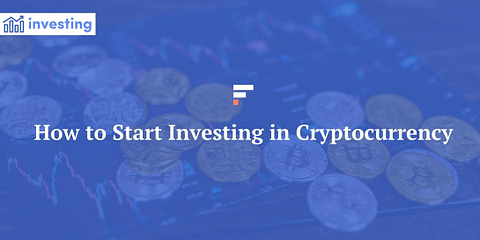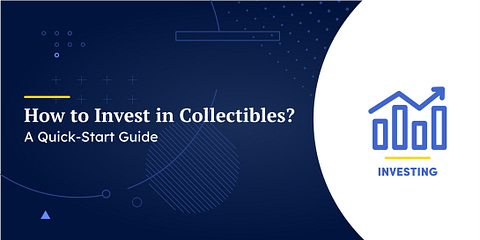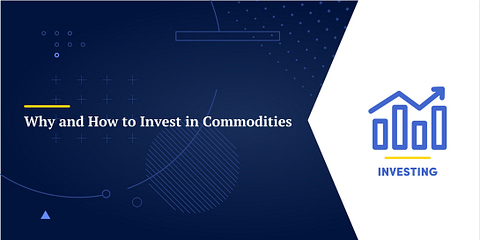Is investing in art a good idea? An astronomically high bid at Christie’s or Sotheby’s can make headlines, but should art be a part of your investment strategy? The short answer: there are plenty of risks and you’ve really got to be in it for the long haul. But if art is something you’re passionate about, something that brings you joy, a diverse investment portfolio has room for the art collector. It’s a sector in which your investment can definitely pay off, but not a sector where you want to place all your financial hopes and dreams.
Maybe you’ve been collecting art since forever, and somewhere along the way, you started getting serious. Should you think of art as an investment? And if so, what do you need to know in order to go from appreciating and enjoying art to making smart investment decisions? Let’s explore when and how art can be a good investment for you.
Invest in Art With Money You Can Afford to Lose
This is the first rule of art investing, or any investing where your return is not guaranteed. This is not investing in a low-risk mutual fund. If art is something you are passionate about, there is nothing wrong with collecting it. As an investment strategy, you need to think about it as a long-term alternative investment. Wealth is built when you have your financial bases covered and can begin to dabble in investments where the risk/reward calculations are more dramatic. If you are investing in art, you have to be prepared to have your money tied up for a long time or even to lose it.
Advantages of Investing in Art
Investing in art has some distinct advantages compared with other asset classes.
- You have a physical asset. With art, you have something to show for it. It’s not just a number in an account somewhere. It’s not a portfolio of companies you don’t really know much about being looked after by a fund manager.
- Art brings pleasure. You can display artwork proudly in your home and enjoy it and share that enjoyment with friends and family who visit.
- Consistent value. This may surprise you, but art is not volatile the way stocks and other asset categories can be. There are no guarantees, but the art market tends to be fairly stable over the long haul.
- Reliable gains. The data show that well-selected art portfolios tend to appreciate over time.
🎨 You’ve got to choose wisely, and you’ll need to have a good eye for art and a good sense of the market, but art does tend to gain value over time.
Disadvantages of Investing in Art
Make no mistake, there are also disadvantages in the art market, and you will have to consider them before investing.
- Art is not a liquid asset. You can’t quickly cash out on a Monet, so if you think you might need your money in a hurry, this is not the place to park it.
- You’ve got to know your stuff. You either have to know a great deal about art or put your trust in an expert who can make wise decisions on your behalf.
- Art needs proper storage and maintenance. This is not something you can just store and forget about. Art needs to be carefully displayed or stored and, when necessary, restored by people who really know what they are doing. But you need to be careful here, too. Even great restoration can negatively impact the value of a work of art.
🎨 Art that the market accepts as collectible typically appreciates over time, sometimes dramatically. The challenge lies in selecting pieces and artists who are or will be accepted as collectible. That requires detailed knowledge of both art and the art market.
How to Invest in Art?
Art investing is very personal and needs to be a hands-on endeavor. Here are a few things to keep in mind in the investment process.
- Know the artists. Learn about the artists whose work you’re considering. Does their work have a track record of increasing value? Are they new and getting buzz in the art world?
- Authenticity is key. If the artist is still living, determining authenticity is not complicated. If they and their representatives claim it, it is an authentic piece. For artists who are no longer living, get a reliable certificate of authenticity.
- Get an appraisal. You want the value of your pieces to go up, and that starts with paying the right price. You’ll need to pay an appraiser, but knowing the value of a piece ahead of the purchase is crucial to making a sound decision.
- Buy originals for the best odds on a positive return on your investment. There is a market for prints (copies of a painting that are high quality and on a limited run) but they may or may not appreciate in value.
- Know the dealer. It can be difficult to find information on small-scale art dealers but do as much due diligence as you can. Check the dealer’s reputation. Most galleries and dealers will have information about past exhibits and works they have represented. If you can find previous customers, they can be a great resource.
⚠️ Galleries and auction houses are going to put the most positive spin on artists and the value of the work. As much as possible, seek independent verification of the artist’s background, the authenticity of the work, and its current value.
Where to Purchase Art?
Keeping all of the above in mind, where you purchase a work of art is important. Here are the most typical venues for art purchases and what to look for as you purchase with an eye toward long-term investment value.
Auction House
For making a calm, rational decision, an auction may not be the best place for purchasing works of art for investment. Unless you have the discipline to go in with a budget ceiling and stick with it, a bidding war can escalate the cost of a work beyond what you had intended to pay. Also, this is a scenario where you want to have your research buttoned up ahead of time. You want to know everything you can about the artist, the work you are interested in, and the auction house itself before signing in and picking up that numbered paddle.
Gallery
For a clear-headed art purchase, a gallery is the better choice. After the research is done, a purchase at a gallery can be made without the heightened drama that can accompany an auction purchase.
Online
The popularity of the purchase of art through online galleries and auctions is increasing every day. Just make sure you are purchasing from a reputable source, and follow all the research and data collection guidelines – which you will probably be doing largely online anyway.
Direct From the Artist
If you are personally acquainted with artists you believe in, buying work directly from them can provide valuable support to an emerging artist and can be a way to get great deals on potentially valuable pieces. Just be sure that your personal connection to the artist is not coloring your judgment. These purchases are likely to be high on the risk scale.
What Medium Is the Best Investment?
When we think of investments in works of art, most of us think of paintings. We think of masterworks hanging in the Louvre, the Whitney, the Tate, or other famous museums.
According to Widewalls, the medium is much less important than understanding the market. So while the most popular media for collecting and investing are paintings, drawings, photography, and sculptures, the medium is not the main concern in your investment strategy.
NFTs: the Wild, Wild West
The newest and wildest form of art investment is the NFT, which stands for Non-fungible Token. Maybe you’ve heard about the artist Beeple selling a piece of unique digital artwork for $69 million. NFTs are a version of blockchain technology that creates a digital file that is unique and not transferable. Unlike digital currency developed with blockchain, NFTs are non-fungible, which is another way of saying non-interchangeable. So, where one coin can be traded one-to-one for another, an NFT is unique. NFTs can be unique artwork, audio, or video files.
NFTs have made headlines lately, but this is unknown territory, so proceed with caution, if at all. This is a market for early adopters and for those who are not risk-averse. But to satisfy your curiosity and stay in tune with trends, it is a market to know about and pay attention to in the coming years.
Tools for Understanding and Exploring the Art Market
If you are just getting started in collecting and investing, here are some tools that can help you understand the current market better.
- Magnus is an app that collects data on art. In this age where knowledge is at our fingertips, a way to find out about artwork in real-time can be a valuable tool. When you see a piece that catches your eye, there might be some data available.
- Art Market Research is your source for more general information on art market trends. From fine art to handbags and rare whiskey, there’s a market for that. Understanding the year-over-year trends can help you assess the appreciation potential of a piece you’re considering.
- Masterworks allows you to dip a toe into the market by purchasing a share in works of “blue-chip” artists. The fractional ownership system is similar in some ways to platforms like Fundrise, which invests in a portion of a commercial real estate property.
- Artemundi is one example of an investment fund dedicated to helping people manage art portfolios. With a number of funds to join, account management services, and appraisal services, companies like this can be a helpful resource to the serious collector.
This is a sample of the resources available to a beginning art collector. We’re not endorsing any of them, and if you plan to invest in art, you should explore as many options as possible and examine all of them critically.
Is Investing in Art Right for You?
Art is not an asset class for everyone. And if you may need that money to pay the bills in the near future, this kind of investment is not for you. But if you appreciate art and are looking to diversify your investment portfolio, art may be an interesting and valuable path forward for your long-term investment goals.
(When) Is Art a Good Investment? is a part of our guide Alternative Investments For Beginners. Read up on other popular types of alternative investments:











